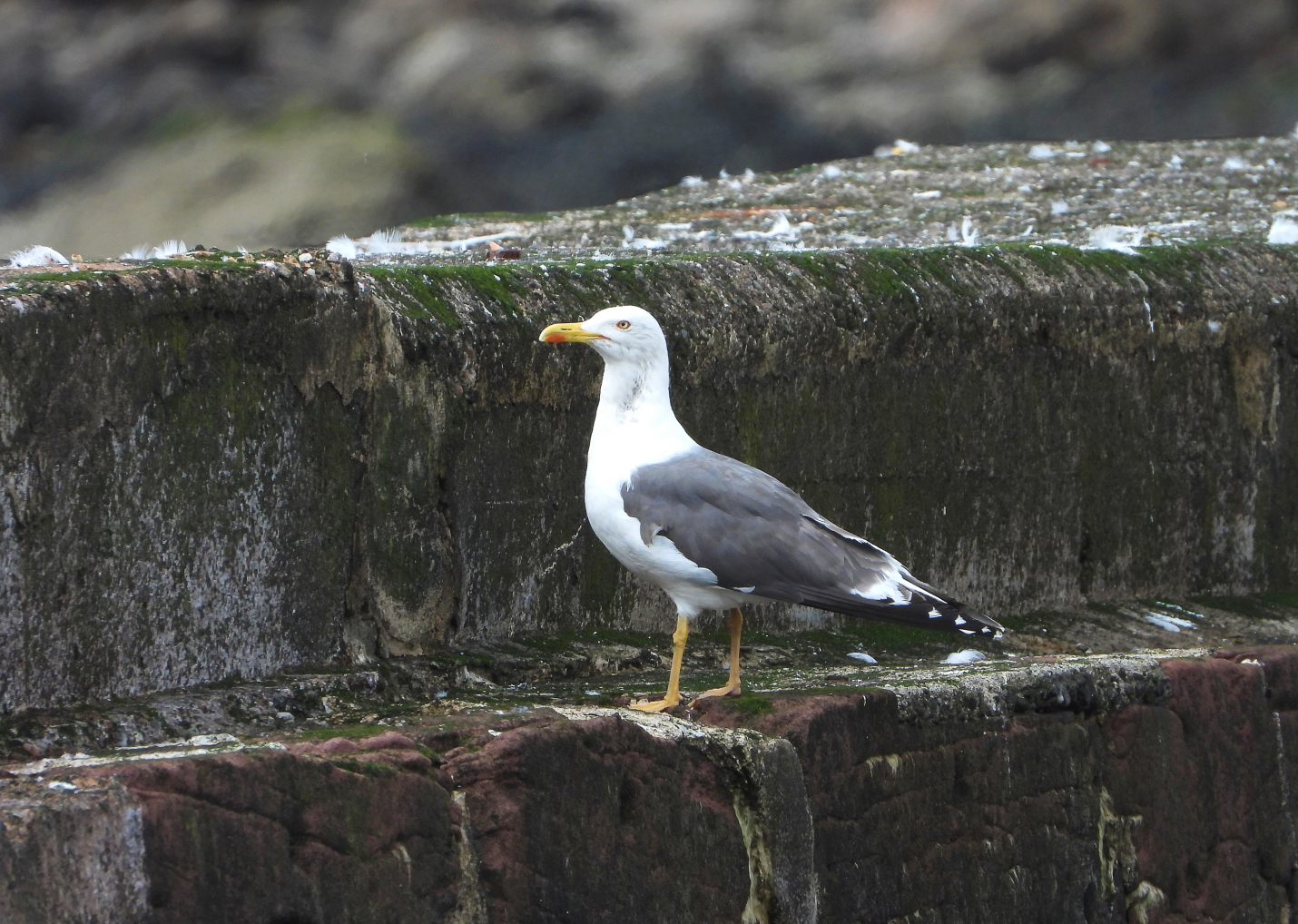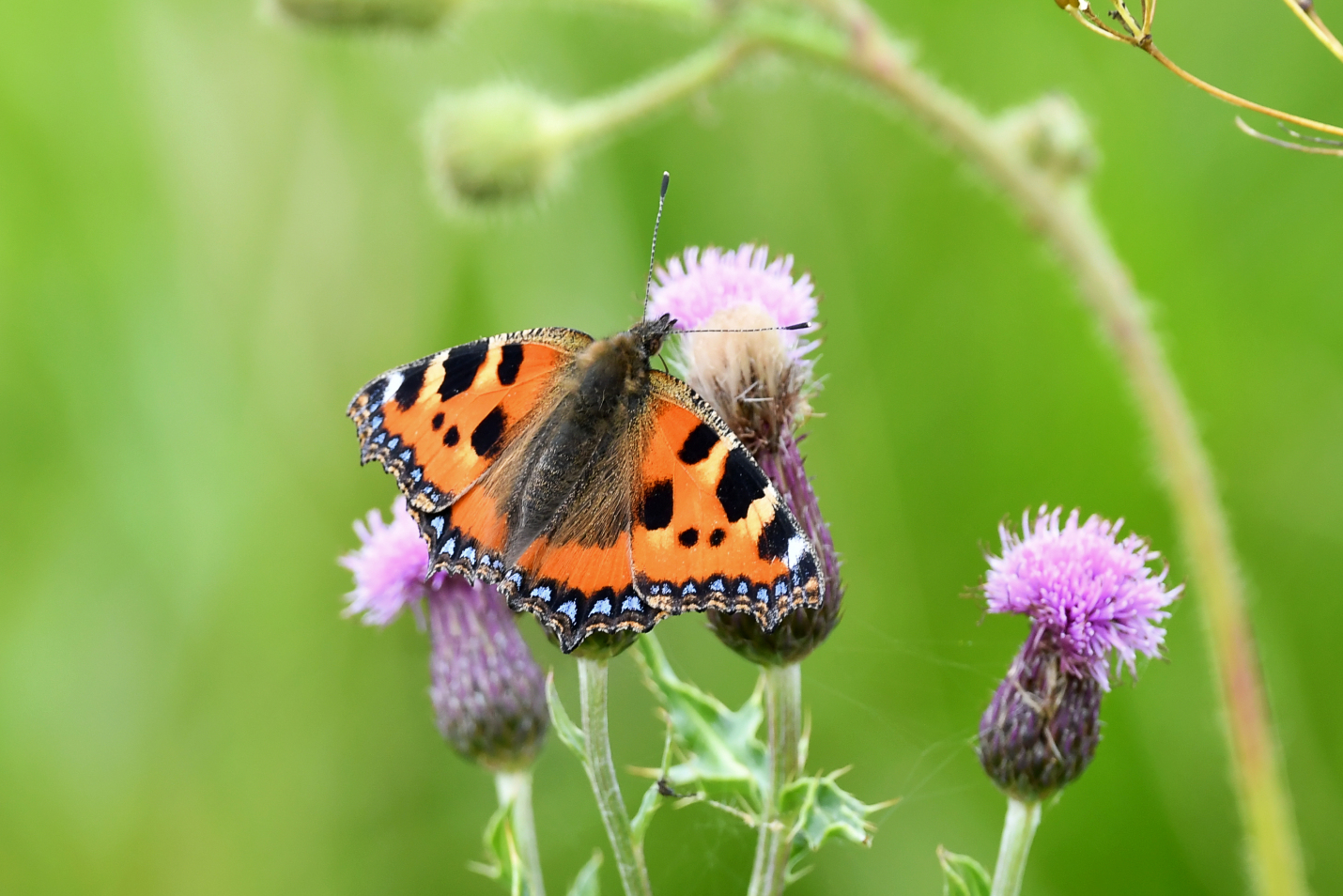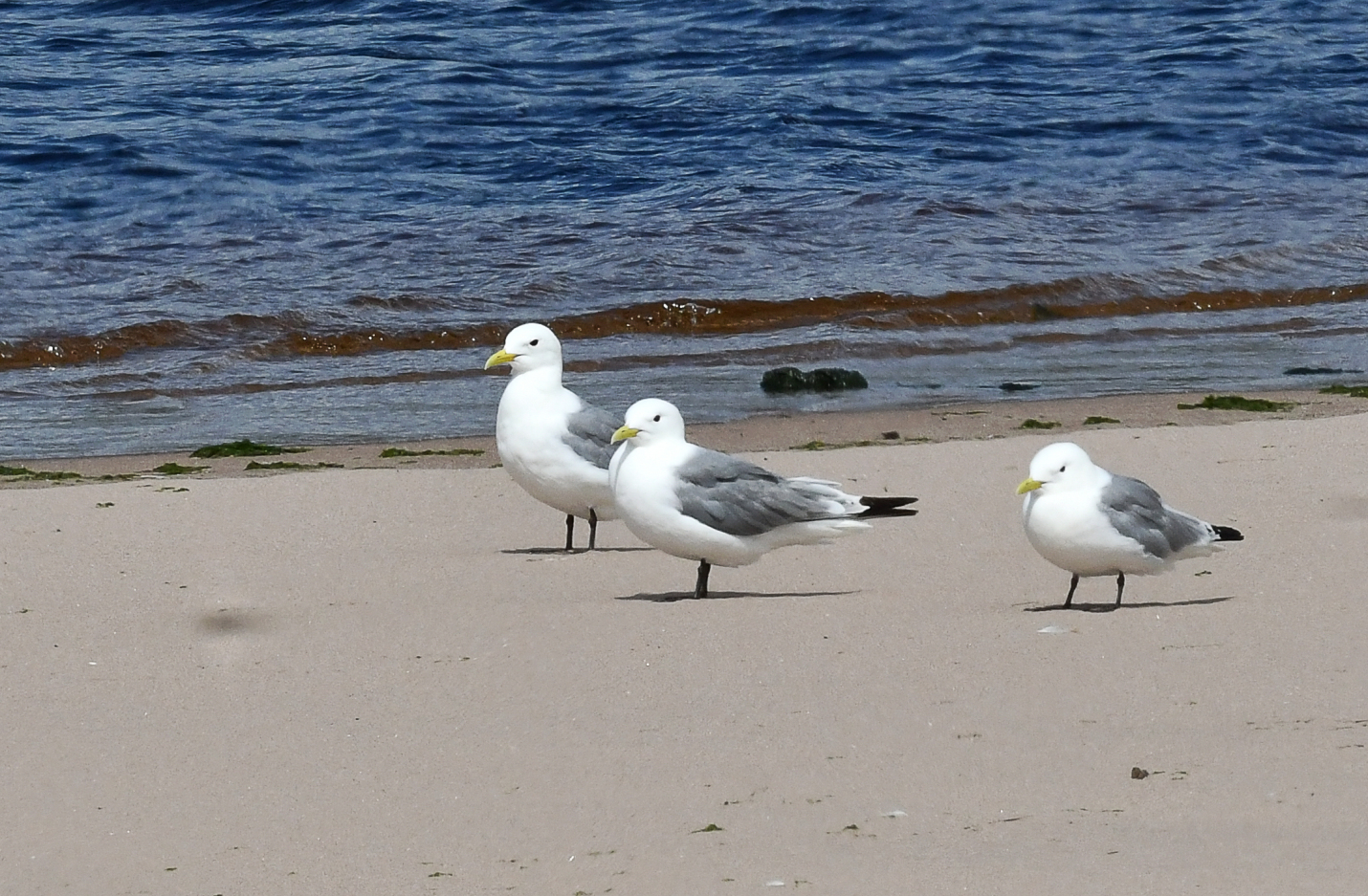In date order. Today while on taxi duty I had a quick look at the Arbroath Harbour area and found Kittiwakes roosting on a breakwater, something I've not seen before.
On Monday I walked out to the south bank of the North Esk estuary through Kinnaber Woods, and despite far from ideal conditions I managed to find and photograph butterflies, moths, bees and flies. One of the videos below shows 9 or 10 species on one Hogweed head. They were quite easy to film by kneeling on the path, but not such a good thing when a mountain biker had to break sharply. I don't think he appreciated insects!
Lastly at Lunan Bay, around 120 Common Scoters and 4 Velvet Scoters, and 5 Red-throated Divers. Also Kittiwakes looking sickly behind Red Castle.
Giant Tachinid Fly, the largest fly we have Common Blue Butterfly Common Scoters flushed by a kayaker
A sleepy (avian flu perhaps) Kittiwake on the breakwater at Danger Point (Old Brewhouse)
I've never seen Kittiwakes using the breakwater as a roost, they would normally sit on the rocks or the old pipe. As they appear lethargic, they may feel safer roosting on the wall than being vulnerable on the beach
These were just below the ones above and more were on the nearby rocks, 71 birds
Lesser Black-backed Gull beginning to fade to grey
Speckled Wood Butterfly at Kinnaber, sixteen counted without looking hard
Speckled Wood underwing
Despite it being dull and showery, there were lots of various insect species in sheltered places
Small Heath Butterfly, far too many to count
Meadow Brown Butterfly, many again as above
Common Blue Butterfly, only males seen
Small Tortoiseshell Butterfly, only in a few places just behind the dunes
Six Spot Burnet Moth, most keeping low to the vegetation
Common Dance or Dagger Fly Empis tessellata
Dune Robber Fly Philonicus albaceps. (The most characteristic of sand-dune robberflies, this large greyish insect with black legs can be found throughout the summer on warm sandy patches and footpaths in the outer dunes, often sharing its habitat with the Northern Dune Tiger Beetle (Cicindela hybrida). P. albiceps’ prey consists mainly of other flies, often relatively robust species. This species is often abundant on coastal dunes throughout England and Wales, as far north as central Scotland.)
Dune Robber Fly Philonicus albaceps
Red Soldier Beetles, also known as "Bonking Beetles" for obvious reasons
Giant Tachinid Fly Tachina grossa. (Tachina grossa or giant tachinid fly is a very large tachinid fly found throughout most of Western Europe. At 15–19 millimetres (0.6–0.7 in) it is one of the largest species of fly throughout much of its range and is the largest tachinid in Europe. It is very distinctive, being hairy and with a black thorax and abdomen, and a bright yellow head.
Like most tachinid flies, the female lays her eggs on other living insect larva, the fly larvae then develop inside the living host, devouring it and eventually killing it. Its main hosts are the large hairy Lepidopteran caterpillars, particularly the Oak eggar moth Lasiocampa quercus and Macrothylacia rubi.
In the UK there is usually only one generation per year, though in southern Europe there may be two generations per summer season, though this has not yet been verified. The adult flight period is from July to August. Habitat is dry open meadows, peat land, and heaths.
Bumblebee Blacklet Cheilosia illustra and Orange-spot Piercer Moth Pammene aurana
Bumblebee Plumehorn Volucella bombylans
Thick-headed Flies Sicus ferrugineus and Orange-legged Furrow Bee Halictus ribicundus
Thick-headed Flies Sicus ferrugineus
Cinnabar Moth caterpillar
Kittiwakes on the south bank of the estuary at St Cyrus
About one third of the gulls roosting on the north bank of the estuary, they probably won't get any peace, and be moved around by walkers



























No comments:
Post a Comment